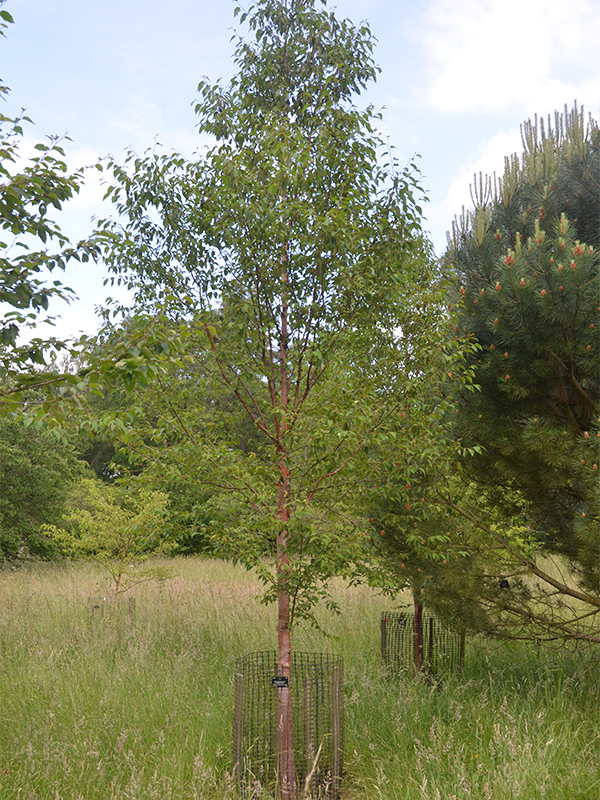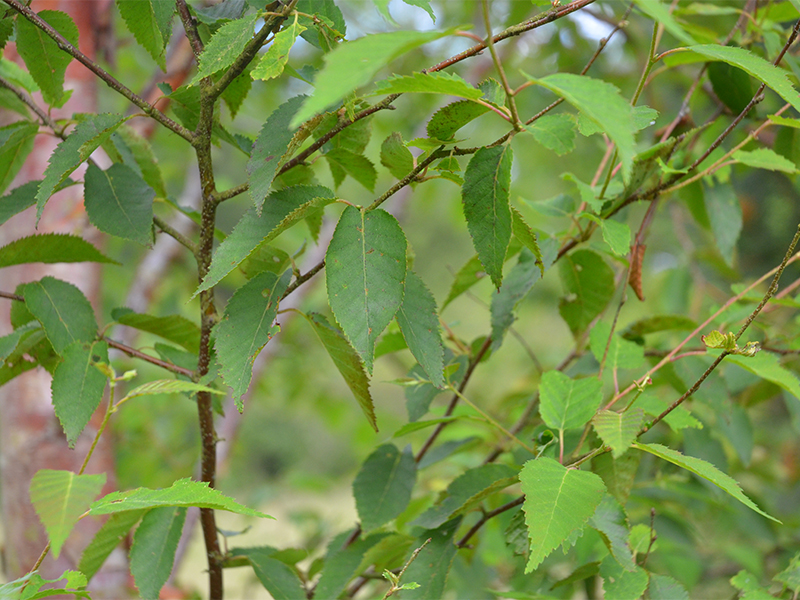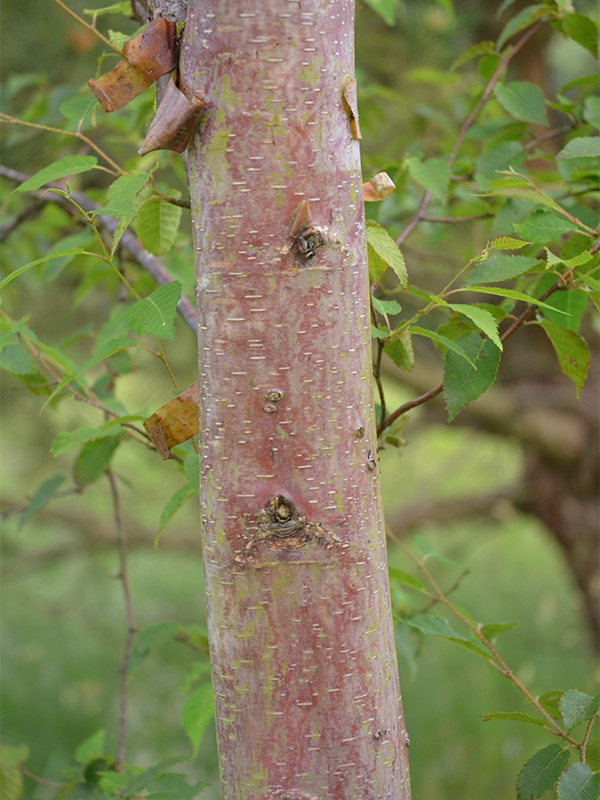
Woody > Betula > Betula albosinensis > Betula albosinensis var. septentrionalis
Betula albosinensis
var. septentrionalis
Northern Chinese Red Birch
Origin: Native to China.
| Family |
| Betulaceae |
| Genus |
| Betula |
| Species |
| albosinensis |
| Category |
| Woody |
| Type |
| Tree (deciduous) |
| Variety |
| septentrionalis |
| USDA Hardiness Zone |
| 1 - 6a |
| RHS Hardiness Zone |
| H7 |
| Temperature (°C) |
| -20 |
| Temperature (°F) |
| -4 |
| Height |
| 12 m |
| Spread |
| 4 - 8 m |
Photographs
Description and Growing Information
Flowering Period
| Landscape |
| Borders, beds, cottage and informal gardens. |
| Cultivation |
| Prefers full sun and partial-shade. Plant in moist but well-drained soil. Prefers sand, clay, chalk and loam soils. Drought tolerant. |
| Shape |
| Upright and bushy. |
| Growth |
| Medium |
| Pests |
| Sawflies, aphids and leaf miners. Mildew and rust may be a problem. Deer tolerant. |
| Bark/Stem Description |
| Peeling bark. |
| Leaf Description |
| The leaves are oval. |
| Flower Description |
| Slender male and female catkins that open before or with the leaves in spring. |
| Colour Description |
| The bark is a pinkish-copper and orange in colour. The leaves are green turning yellow in autumn. The catkins are brown. |
| Notable Specimens |
| The National Westonbirt Arboretum, Westonbirt, England. |
| Propagation |
| Seed, softwood cuttings and grafting. |


